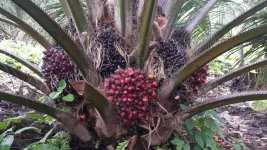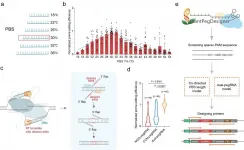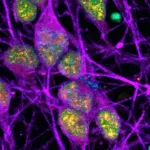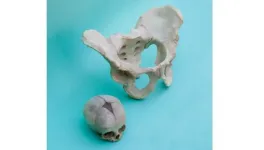The findings, which appear in Nature Immunology, not only shed new light on cancer immunology, they also suggest clinical trials related to this key target -- an interaction that destabilizes the important p53 tumor suppressor protein -- may unnecessarily be excluding a large number of patients.
The researchers are optimistic that the findings could help make immunotherapy treatment more effective against cancer.
"Everyone agrees this interaction is really important. The question is why, after so many years of work by biologists, biochemists and pharmacologists at universities and major drug companies, why don't we have a drug that works?" says senior study author Weiping Zou, M.D., Ph.D., the Charles B. de Nancrede Professor of Pathology, Surgery, Immunology and Biology at the University of Michigan.
The answer, says Zou, is that it's not just what's happening inside a patient's tumor cells that needs to be taken into consideration -- their immune cells play a vital role, too.
"We decided to look at the problem from the perspective of immunology," he says. "We thought that even if this important interaction is understood in tumor cells, there may still be a problem in the immune system. So we sought to better understand what was happening in T cells -- the soldiers of the immune system. And what we found was quite unexpected."
The 'guardian of the genome' To better understand the U-M team's findings, it may be helpful to introduce the key players in this biological drama.
The gene TP53 has been called the "guardian of the genome" because the protein it makes -- p53 -- is essential for DNA repair and cell division. About half of all cancers are critically driven by mutations in this single gene that disrupt its ability to function as a tumor suppressor.
Yet that leaves another 50% of cancers that arise in patients whose tumors carry intact TP53.
For these patients, scientists have long sought to develop medicines that can disrupt the interaction between p53 and Mdm2, which is involved in keeping p53 levels in check. The idea is that disrupting their interaction would make more p53 available to suppress cancer.
These trials have generally excluded patients with p53 mutations because a lack of functional p53 means that interaction isn't happening inside their cancers.
"You want to stop the degradation of p53, that's the goal," explains Zou, who is also director of the Center of Excellence for Immunology and Immunotherapy at the U-M Rogel Cancer Center. "This is a very simple concept, but people have been working on this for years and we still don't have any FDA-approved drugs."
This is where Zou and his colleagues tried something new. Their experiments sought to probe the interaction between p53 and Mdm2 not just inside tumor cells, but also inside immune cells.
Mdm2: bad in tumor cells, but essential in immune cells Although disrupting the p53-Mdm2 interaction in tumor cells was generally positive, the U-M team found that if disrupting the interaction between the same proteins inside T cells results in less Mdm2 in T cells, then the T cells will be functionally impaired.
"We discovered that while Mdm2 is bad in the context of tumor cells because it gets rid of p53, it's also essential for T cell function and survival," Zou says. "T cells need Mdm2."
Likewise, immunotherapy needs T cells. The approach harnesses and boosts the power of the body's immune cells to kill cancer cells. Without working T cells, the body can't mount an immune response. This could be one reason why immunotherapy drugs do not work in more than half of patients.
The findings also have important implications for ongoing drug discovery efforts, Zou stresses.
"Our study suggests that when you design and screen a drug candidate, you have to take not only the tumor cells into consideration, but also the T cells," he says. "Although there's a feeling that Mdm2 in tumor cells is a bad thing, drug developers need to make sure Mdm2 is not abolished in T cells or it will contribute to poor clinical outcomes."
Along with experiments using mouse models lacking either MDM2 or p53 in their T cells, the scientists tested a promising new compound called APG115. APG115 interferes the interaction between Mdm2 and p53, causing an increase in Mdm2 expression in T cells. Thus, APG115 showed T cell-dependent anti-tumor activity in mouse models.
APG115 was discovered in the lab of Shaomeng Wang, Ph.D., a critical collaborator on the project and the Warner-Lambert/Parke-Davis professor and a professor of internal medicine and pharmacology at the U-M Medical School; Wang also holds an appointment in the U-M College of Pharmacy.
The compound was licensed from U-M by Ascentage Pharma and is currently in several clinical trials for the treatment of human cancer, including in combination with pembrolizumab in patients with metastatic melanomas or advanced solid tumors. Wang is a co-founder of Ascentage and its chief scientific advisor.
"This compound interferes with the interaction between p53 and Mdm2," Zou says. "And when we administered it, we saw two things happen: p53 expression was increased, which is exactly what you want; but Mdm2 levels also increased -- which was the opposite of what we expected."
The researchers mapped the molecular interactions, finding that inside T cells, Mdm2 plays another role besides interacting with p53. It stabilizes a protein called Stat5, which is, in turn, important for T cell survival and function.
So, this paradoxical result of increasing levels of Mdm2 in T cells actually enhances their tumor-fighting properties and could make immunotherapy treatment more effective, Zou says.
Moreover, the researchers found APG115 functioned regardless of whether tumors contained normal or mutated versions of TP53.
"So what this tells us is that clinical trials for drugs that target Mdm2, including those currently in development that target the interaction between p53 and Mdm2, could potentially be expanded to include patients who are currently excluded -- those whose tumors carry loss-of-function TP53 mutations," Zou says. "Right now, if a patient's tumor has mutated p53, then those patients wouldn't be eligible for clinical trials for drugs that target p53-Mdm2 interaction. What our research shows is that this is really unnecessary. Patients will have normal p53 and Mdm2 in their T cells, and that's where it's really important."
With this new finding, Zou and Wang believe that future clinical trials of APG115 and other Mdm2 inhibitors should include patients whose tumors harbor mutated p53.
INFORMATION:
Additional authors include Jiajia Zhou, Ilona Kryczek, Shasha Li, Xiong Li, Angelo Aguilar, Shuang Wei, Sara Grove, Linda Vatan, Jiali Yu, Yijian Yan, Peng Liao, Heng Lin, Jing Li, Gaopeng Li, Wan Du, Weichao Wang, Xueting Lang and Weimin Wang, all of U-M.
The research was supported in part by research grants from the National Cancer Institute (CA248430, CA217648, CA123088, CA099985, CA193136, CA152470) and the National Institutes of Health through the U-M Rogel Cancer Center Support Grant (P30CA46592).
Paper cited: "The ubiquitin ligase MDM2 sustains STAT5 stability to control T cell-mediated anti-tumor immunity," Nature Immunology. DOI: 10.1038/s41590-021-00888-3






